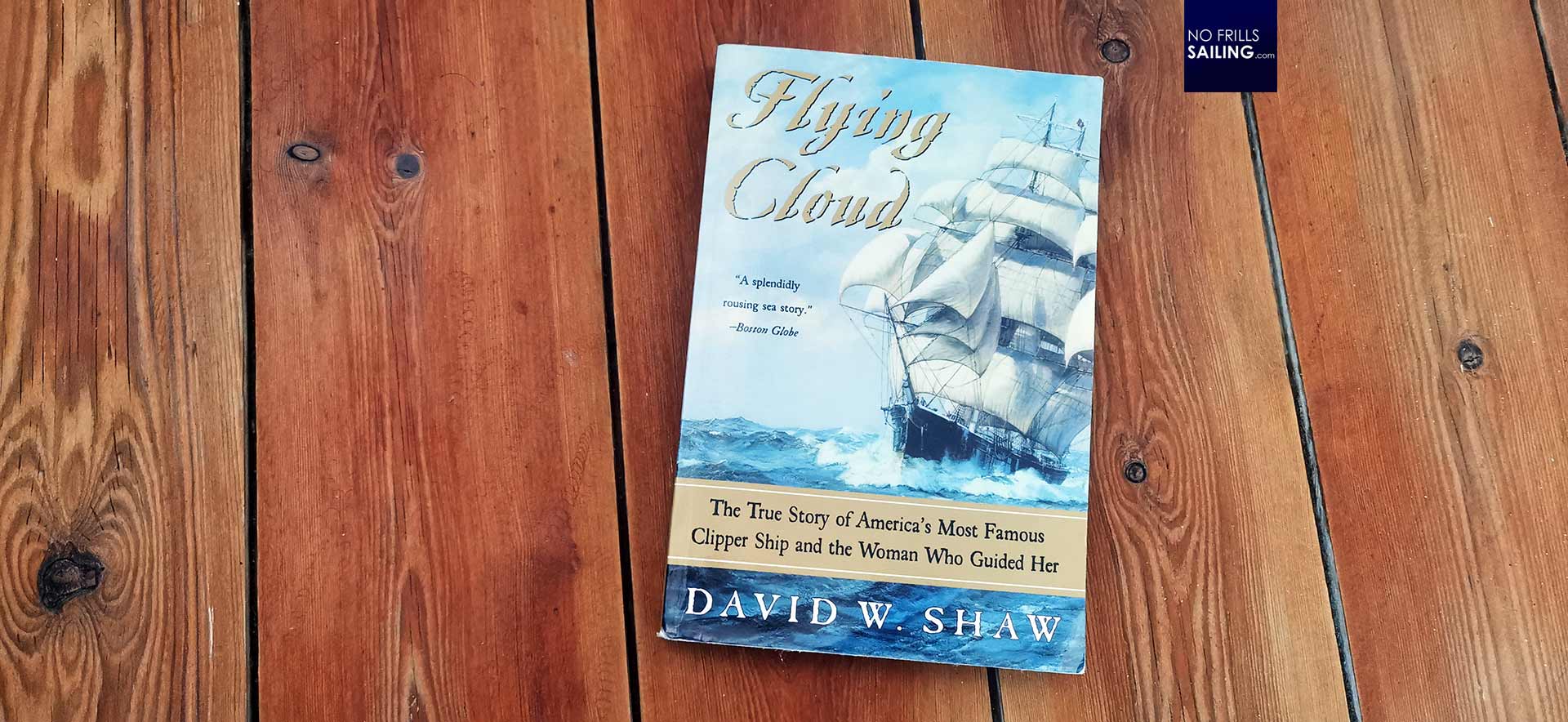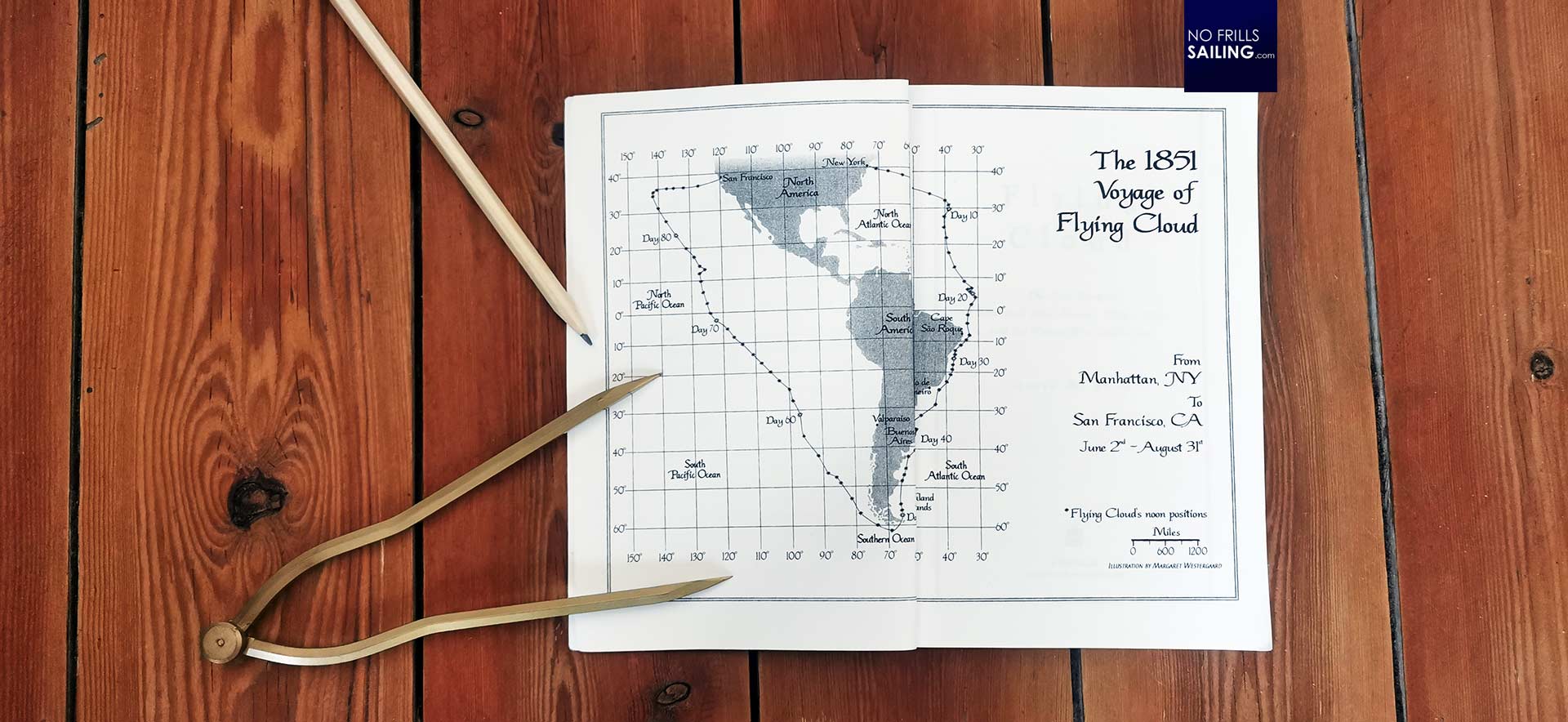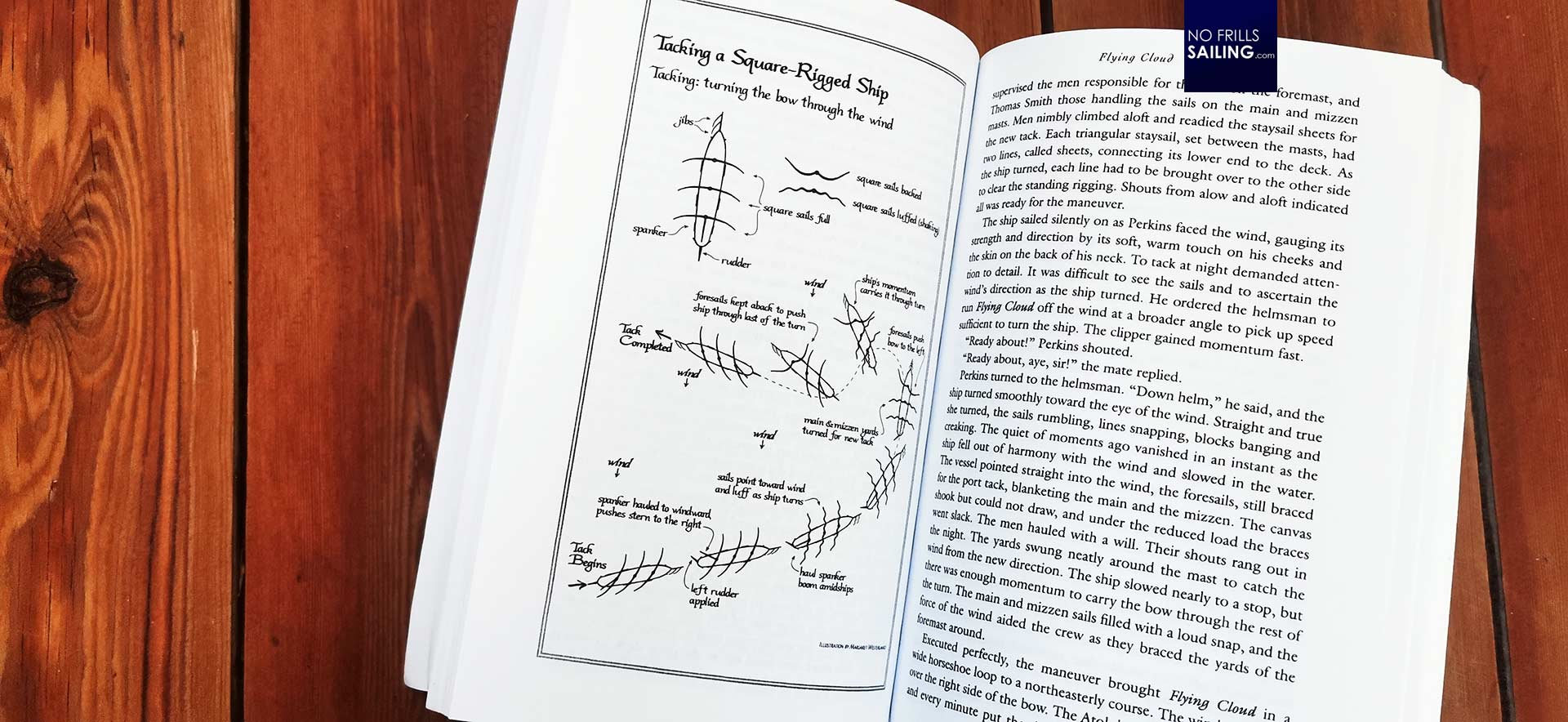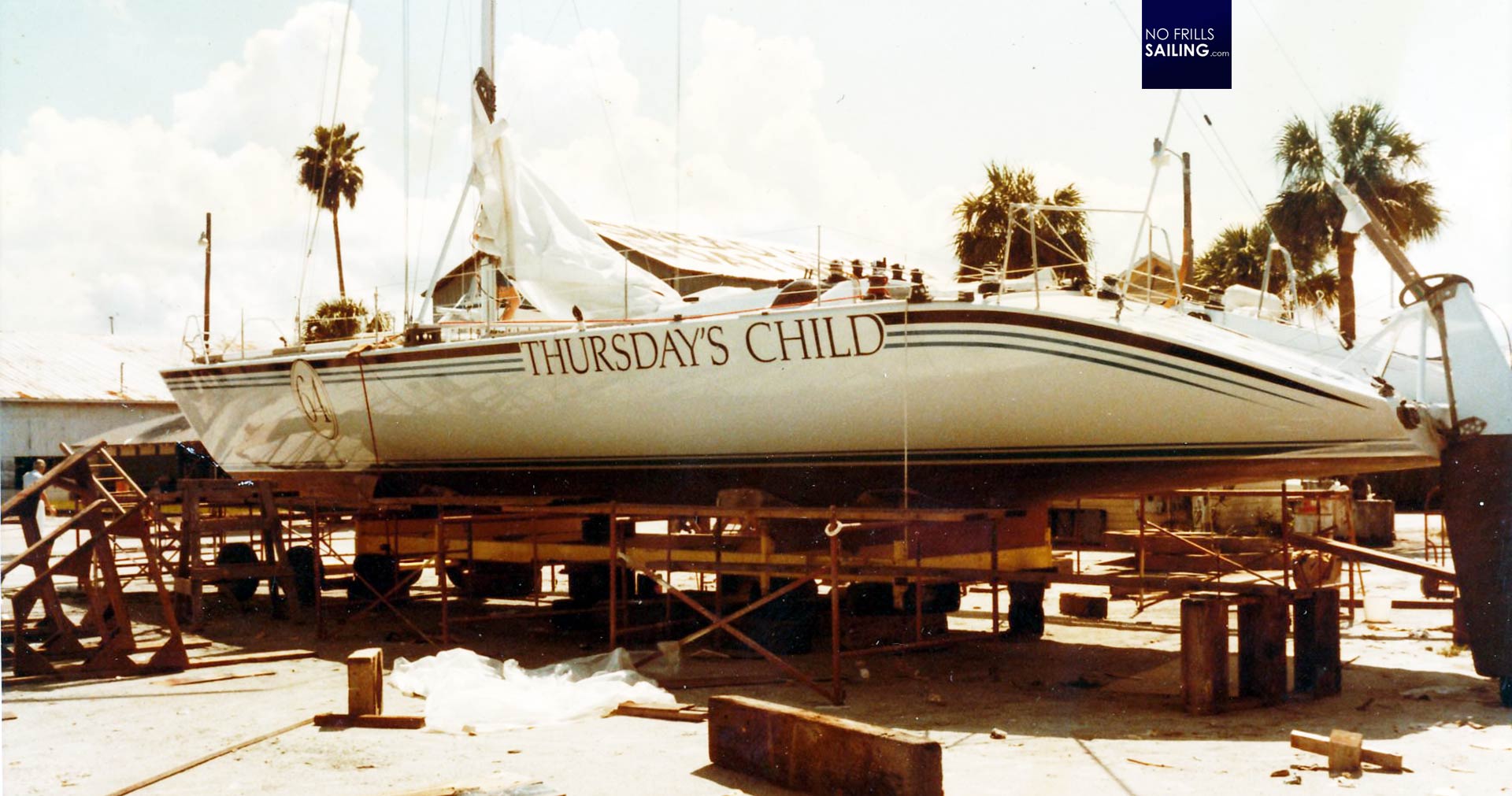This time it´s not a movie in my review but a book again, and it´s even not a new book to be honest: David W. Shaw´s “Flying Cloud” was written and first published a whopping 21 years ago in the year 2000, published by and still available at Harper Collins. So, why review a book this old? Well, maybe it´s my current somehow nostalgic, somber and winter-depressed mood that makes me crawl under a nice fluffy blanket on my lockdown-sofa, slurping a big pot of hot cocoa with a splash of fine Rum yearning for a book of the “good ol´ times”. If you are in a similar mood, well, here´s a book you´d definitely enjoy!

“Flying Cloud” is much, much more than just a book on the famous American Clipper Ships of the Goldrush, the fierce contest of Boston and Baltimore yards to build the fastest sailships of the planet by going from one extreme to the next. It´s an account of seafaring history – and much more. The subtitle of this magnificent book says it all: “The true story of America´s most famous Clipper ship and the Woman who guided her.” Well, now it gets interesting, don´t you think?
A special ship. A special Captain. A Special Crew.
A quick reminder of the times we are talking about: The Great West of the still you USA hadn´t been conquered yet but the promises of a life in abundance and the freedom to become whatever one was seeking to, catalyzed by the promising news of lots of Gold to be extracted instilled a rush of people coming to the US east coast, willing to take the “safer” route to the promised land – California – by means of boarding a sailing ship and going around of South America, Cape Hoorn up up North again. This perilous and dangerous trip could last 90, sometimes more than 100 days and still was considered safer than attending a trek on a wagon crossing Indian land.

The Clipper Ships where extreme in any ways: The length/width-ratio was whopping. Sleek, sharp bowed slim ships designed solely for maximum speed. Square rigged three masted racing vessels, streamlined hulls with copper plating and masts higher than cathedrals. Donald MacCay was one of the most talented ship builders or designers of that time. FLYING CLOUD was his masterpiece. She was beautiful and terrifying at once. An angst-inducing weapon of speed, a Formula-1 gem, celebrated by the press even when still under construction, feared and admired, advertised brilliantly to draw in the goldrushed-people ready to pay for the fastest passage to California.

All this is described brilliantly in the book, David W. Shaw manages to create just the right feeling by painting a rich picture of the time, the people and the mood they lived in. All that optimism, the strive to go out and get it done, but also the despair of many, willing to give their last to take a chance. The second part of the book is dedicated to the ship itself. A reader who loves to dive really deep into shipbuilding, construction techniques and design philosophy will find “Flying Cloud” by David W. Shaw most compelling. But what really struck me most was the very account of FLYING CLOUD´s record breaking voyage from New York City to San Francisco in the year 1851. It´s just mindblowing!
What I like about this book
The clipper ship left Manhattan harbour on the 2nd or June 1851, packed with passengers and some cargo, bound for San Francisco, California. The route was dangerous and notorious, many, many sailing ships still got lost around the Cape Hoorn, most of them without a trace. Captain Creesy, responsible for a crew of some sixty sailors, was regarded among the most capable seafarers of his time. The Captain of a Clipper was often celebrated like a modern pop star by the newspapers. Driven by that fame, motivated by high pay and even high bonuses for speedy passages, these guys mastered the balance of driving the ships at maximum speeds at all time by ensuring not to break them. All too often this thin line had been crossed, with horrendous outcomes. Creesy had a good reputation. But he was also special in a very, very unusual way: He had is wife onboard.

Now, seafarers, still today, are very superstitious people. Women on board of a ship were considered bad luck and – if most – just tolerated as paying passengers. But the Captain´s wife, Eleanor Creesy, was more than just that. Much more. She mastered the profession of being a navigator. She could read. She could process the complicated calculations needed to pinpoint a ship´s position, mastering the ship´s clock and the sextant. She also had a profound knowledge of weather patterns, was able to interpret clouds, waves and winds to come up with a weather forecast and in this she was the responsible person for passage planning. It was her counselling which made Captain Creesy make a decision of where to go, how to sail. A true revolutionary woman of that time!
Most enthralling fact about “Flying Cloud”
It was Eleanor´s profound knowledge and her clever conclusions which enabled her husband to concentrate solely on driving the boat and having his 60 men crew ready at all times, having up just the right amount of canvas to squeeze out every last bit of a knot to have FLYING CLOUD literally flying down south in the race around the Hoorn. Something this ship managed on this famous trip in 1851 to do in only 89 days. A record not to be broken up until 138 years later in a modern 60-feet racing sloop! Could you imagine that? A wooden square-rigged windjammer being the fastest ship of all time, driven by a dedicated crew, mastered by an adorable woman? That is the story of the FLYING CLOUD!

By the way, what had me applauding after reading this fantastic book was a research into the very ship that eventually broke FLYING CLOUD´s record: This boat bears the name THURSDAYS CHILD and is an ULDB-design of Paul Linderburg. This very boat then went on to break the 138 year record of the most famous American Clipper Ship, piloted by three men, of which one named Warren Luhrs later became the founder of Hunter Yachts. Hunter is still operating and the USA´s only “big” production boat company, continuing the ideas of Luhrs. In a way – and this is what makes me so happy when reading and diving deep into marine history – Hunter is somehow a direct connection with the exciting, enthralling and gripping story of those great American Clipper Ships.
My overall assessment for “Fyling Cloud” is 10 of 10 points
You might also be interested in these articles:
Pirates as Pirates should be: Review of “Black Sails”-streaming series
Meeting Germany´s one and only Volvo Ocean Race-winning boat ILLBRUCK
The Cog-Ship LISA VON LUEBECK, a window to the past
